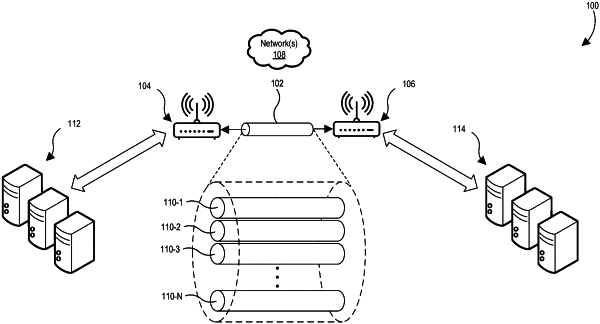| CPC H04L 47/724 (2013.01) [H04L 12/4633 (2013.01); H04L 47/825 (2013.01)] | 20 Claims |

|
1. A method comprising:
establishing, at a first time, a first distribution for resource utilization of a plurality of sub-tunnels of a network tunnel between a first tunnel endpoint and a second tunnel endpoint, the plurality of sub-tunnels operating according to a Resource Reservation Protocol and including a first sub-tunnel having a first resource utilization that is different than a second resource utilization of a second sub-tunnel;
receiving, subsequent to the first time, a data set for a first time period indicating network resource utilization for each sub-tunnel of the plurality of sub-tunnels;
detecting an excess resource utilization of a first set of sub-tunnels of the plurality of sub-tunnels based on the data set, wherein sub-tunnels in the first set of sub-tunnels exceed a defined utilization threshold;
in response to detecting the excess resource utilization, establishing at a second time after the first time a second distribution of the excess resource utilization over a second set of sub-tunnels of the plurality of sub-tunnels different from the first set of sub-tunnels, including:
determining an ordered set of the plurality of sub-tunnels by sorting the plurality of sub-tunnels according to the network resource utilization indicated in the data set; and
determining the second distribution of the excess resource utilization over the second set of sub-tunnels of the plurality of sub-tunnels based on the ordered set of the plurality of sub-tunnels, the second distribution including a first equalized resource utilization over the second set of sub-tunnels that is less than a first next highest resource utilization among the ordered set of the plurality of sub-tunnels.
|